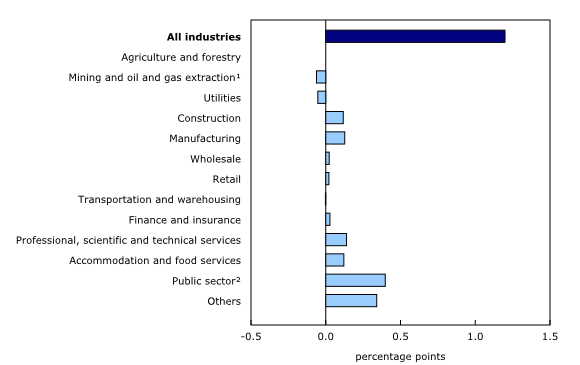Statistics Canada says the pace of economic growth slowed in August as real gross domestic product grew 1.2 per cent in the month. (Matt York/THE CANADIAN PRESS/AP)
Canada’s economy grew by 1.2 per cent in August slightly higher than what economists were expecting but significantly slower than in previous months as the pace of economic recovery began losing steam.
In July, Canada’s economy had grown by 3.1 per cent, the national statistics agency said Friday.
Statistics Canada noted that August marked the fourth straight month of growth following the steepest drops on record back in March and April amid pandemic lockdowns.
The economy was expected to grow by further 0.7 per cent in September, according to Statistics Canada’s preliminary estimate.
Both goods-producing and services-producing industries were up as 15 of 20 industrial sectors posted increases and two were essentially unchanged in August, Statistics Canada said.
August saw healthy increases in the public sector, especially in education, professional services, manufacturing and construction, the data agency said.
Accommodation and food services, the hardest hit sectors by the pandemic, also continued their recovery, though at a much slower pace.
However, the mining, quarrying, and oil and gas extraction sector decreased 1.7 per cent in August, Statistics Canada said.

(Statistics Canada)
RBC economist Claire Fan said the economy has retraced around 75 per cent of the losses earlier in spring, but still sits about five per cent below February’s pre-pandemic level.
The bigger concern is how much of that third quarter growth can be sustained beyond September, Fan said.
COVID cases have been on the rise, prompting local governments to re-introduce some containment measures in hotspots, she said.
“The less stringent and more targeted response this time around probably means activity held up much better than it did back in April,” Fan wrote in a research note to clients. “But the economic rebound was already slowing ahead of the virus resurgence, and there is still clearly a risk that broader containment measures could yet be needed.”
Fan said she expects growth in activity for the industrial sector and some services industries like retail and professional services to persist beyond September.
But hospitality industries, alongside the oil and gas sector, will once again face much bigger challenges as demand weakens, she warned.
























